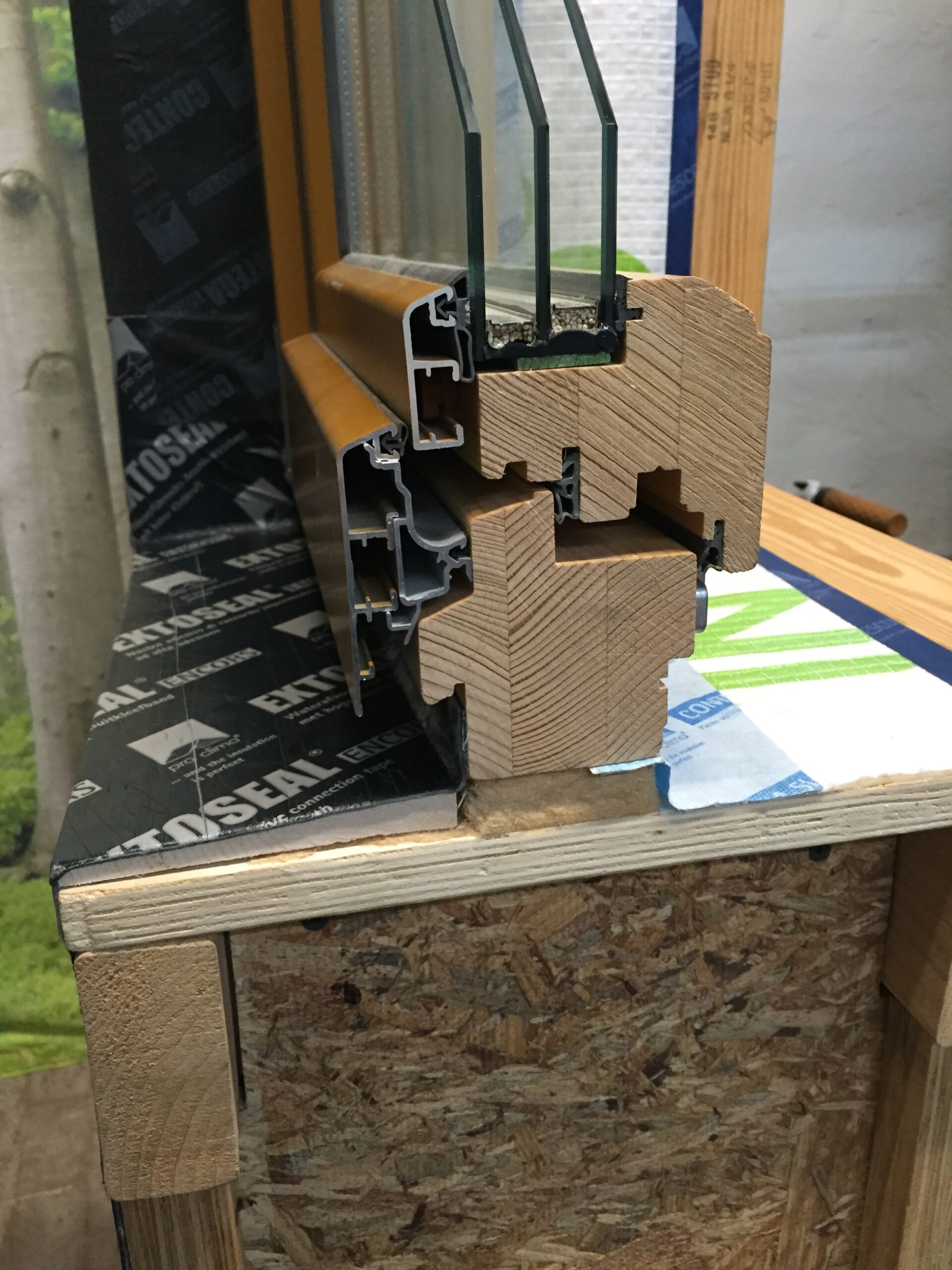

To meet the most stringent building energy use standards in the world, SURE HOUSE has teamed up with the air-sealing experts at 475 High Performance Building Supply.
Passive House, a building energy standard originally from Germany, is growing in popularity in the United States, especially in the New York area. It has a simple idea – create a building envelope that is so airtight and well insulated that you can control the flow of energy in and out of the structure.
A building needs to be wrapped like a present in a completely airtight, unbroken layer. Constructing such an efficient envelope involves more than just adding layers of insulation.
So how do you air-seal a house and why is it so important? Over the next few weeks we hope to show the entire process and how it applies to the SURE HOUSE, but the simple answer is; with the use of specialized tapes and membranes. Because this practice is still new to the United States and these specialized materials are not yet manufactured here, we enlisted the help of 475, Passive House building component suppliers located in Brooklyn.

475 – named after the Passive House cut off for Specific Heating and Cooling Demand of 4.75 kBtu/ft2yr – supplies air-sealing materials for the Northeast United States and offers guidance on how to use them in construction.
In terms of building science, air sealing is critical to creating a successfully efficient envelope. This is true for many reasons, some of which are not immediately obvious. First, a leaky house contributes to significant losses of energy due to the flow of conditioned air out of the building. This leakiness can be measured with a “blower door test” in which a house is pressurized and a number is generated called the “air changes per hour.”
The IECC requirement is 3.0 ACH50 for colder climates while the Passive House requirement is a fraction of that – 0.6 ACH50, quite a challenge and how it is achieved is different for every building. The second reason why this is so important is because airflow through an assembly actually greatly decreases the R-Value of the assembly due to convection removing heat from the insulation.
Finally, since an airtight wall can increase issues with moisture and mold inside the assembly, the assembly must be constructed with detailed analysis of water movement. This should provide greater control over how the wall will hold up if water gets inside.
As the SURE HOUSE team begins the air-sealing process, we decided it was time to head over to 475 on the other side of the island in Brooklyn to get everyone acquainted and to learn a little more about the products we will use. At the 475 warehouses, we took a look at their fleet of mockups showing how to properly seal any type of condition that might break an air barrier. The taping around window and doorframes, MEP penetrations, and at wall junctions must maintain a continuous barrier. A “red pencil test” is performed where you take a “red pencil” and start to draw a line along the air barrier and confirm that you can complete an entire loop without picking the pencil up off the page. If this can be done for every section of the house, you have succeeded and hopefully you will achieve the number you want with your blower door test. If not, it’s back to the drawing board.
With the help of 475, we are working out the issues in air-sealing the SURE House, starting with the basics.
The first product every Passive House project should invest in is an interior, airtight membrane known as Intello. We will use this fabric-like membrane will wrap the interior of the framing of the walls and ceiling for the SURE HOUSE. The technology behind this material is groundbreaking in how it deals with moisture within a wall or roof.
When making a wall airtight, you don’t want to create an opportunity for moisture to get trapped in. Basically, water should always have a way to dry out, but how can water get past an airtight membrane? The creators of Intello have exploited the difference between airtight and vapor-tight to make a material that permits water to pass through it when moisture content reaches a certain level. When a wall gets too wet, the Intello membrane undergoes a chemical change, which allows the wall to dry out, and lessens the risk of mold growth.
The next big line of products we will be considering for air-sealing are the specialized tapes. There are an unlimited number of conditions that require tapes with different properties and geometries. 475 offers a multitude of tape products as well as advice on where to use them so it will be back to Brooklyn for the team as we wrap up SURE HOUSE to achieve optimal energy efficiency.

